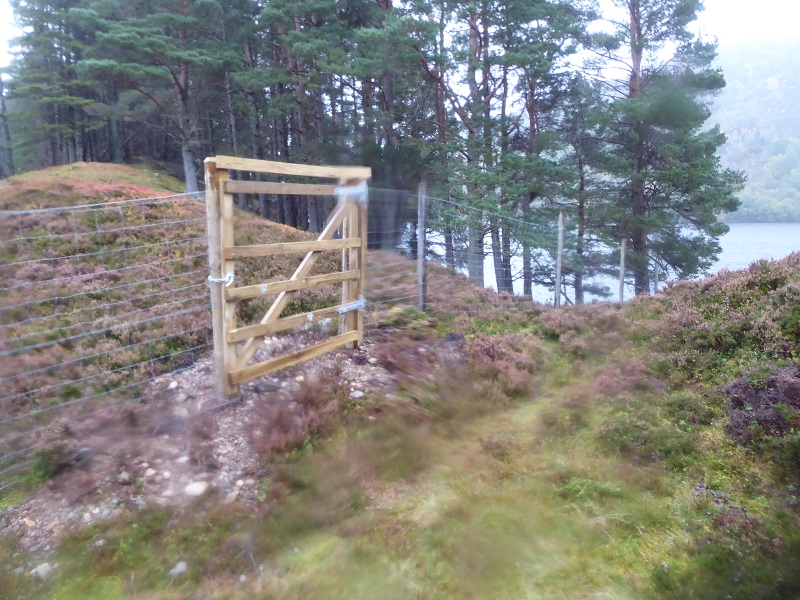
Back in May, I featured a deer fence on the Pitmain Estate in a post headed if-you-come-across-an-access-problem-this-weekend-report-it/. I had reported the fence, which prevented people accessing the north shore of Loch Gynack, to the Cairngorms National Park Authority as an obstruction to access rights. On 26th September, the CNPA informed me that they agreed that the fence was potentially an obstruction to access rights and that as a consequence the estate had installed a gate. I went to take a look myself on 1st October, which turned into a very wet day (apologies for the poor photos) and have been meaning to blog about it since.
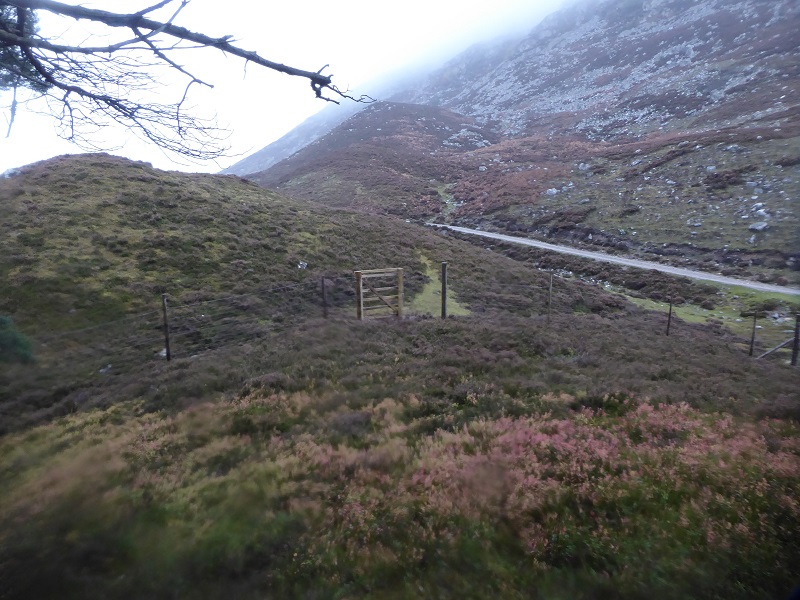
The first thing to say is a very well done to the CNPA staff concerned. While the Drumlean Judgement (see here) has made it clearer that fences or walls without sufficient open gates legally constitutute obstructions to access rights, to get a gate installed in three and half months is good going. It was good to hear too that the estate fully co-operated. I hope this inspires more people to report fences as access problems to Access Authorities, including our National Parks.
The gate is easy to spot from the track and is located in the place along the fence where having a new access point makes the greatest difference. It leads into a small plantation (see top photo) on a glacial moraine on the north shore of Loch Gynack. This is the largest area of ground enclosed between the fence and the loch:
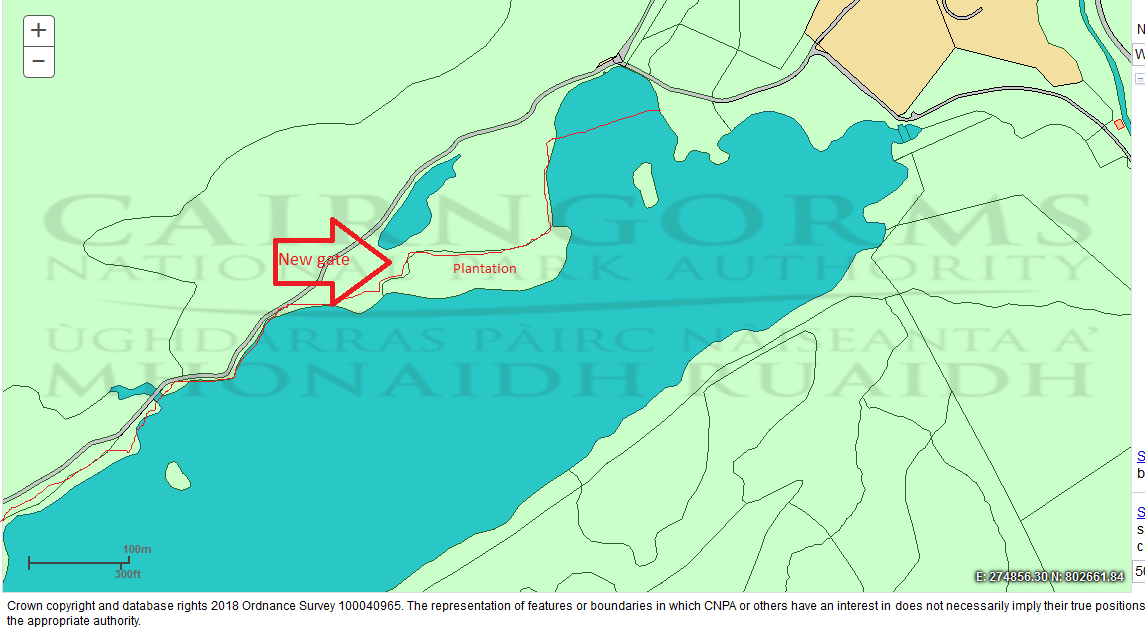
In fact its by far the best bit of ground between the fence and loch for enjoying access rights:
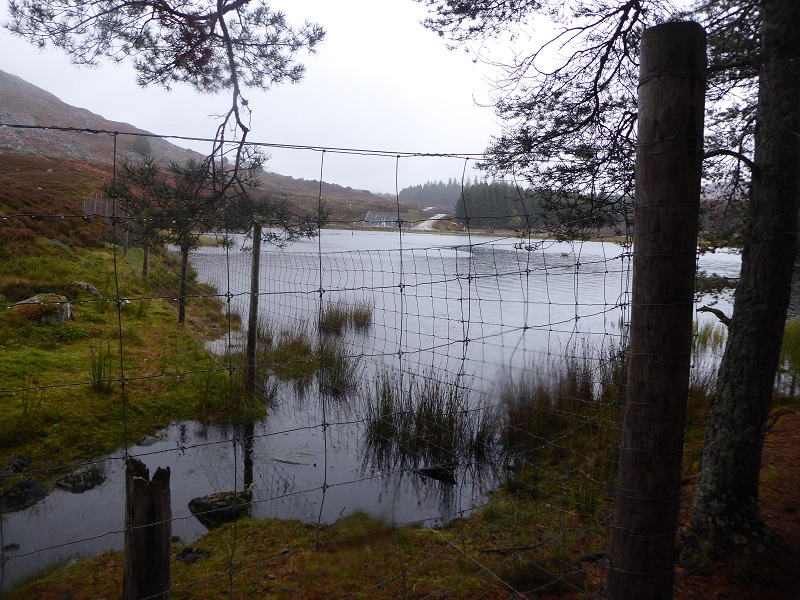
The strip of fence north of the plantation is far too close to the loch shore to allow anyone to walk on the shore side of the fence before it turns and cuts across the bay in front of the hydro powerhouse. This is a fairly short section of the loch shore so, arguably, the fact that its almost impossible to access doesn’t matter that much as you can enjoy the loch shore near by.
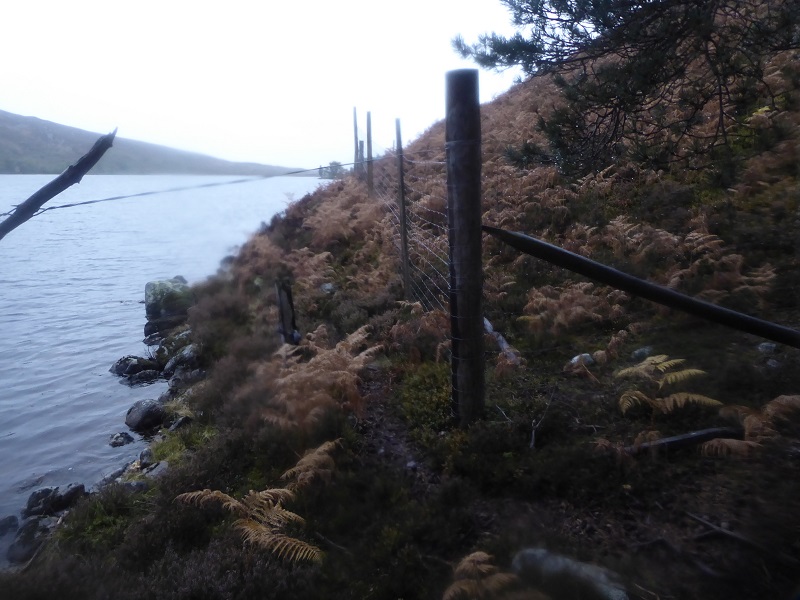
On the opposite side of the plantation, however, the fence returns to the loch shore and then runs close to the loch for four times the length of the northern section. I walked along the loch side of the fence for a time until progress became impossible:
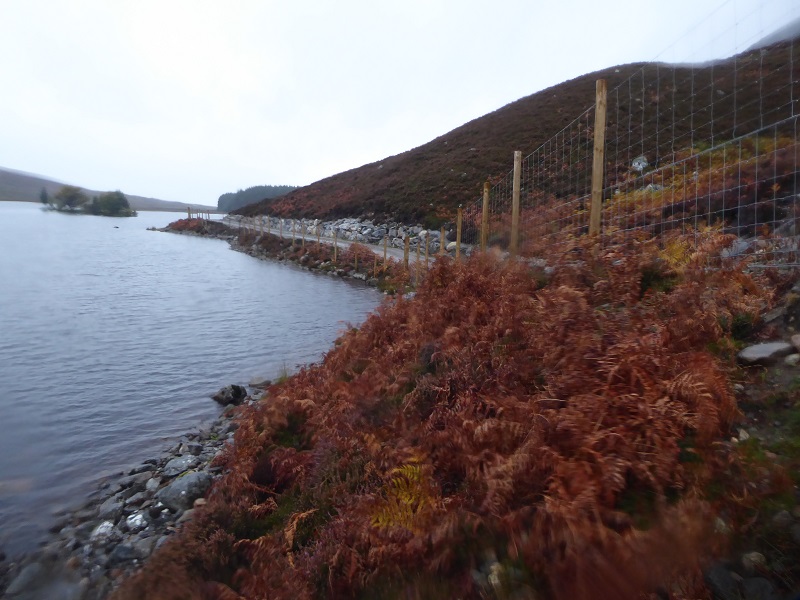
I then climbed over a wooden section, connecting the older and newer sections of deer fence, back onto the track:.

There is an opportunity here to install a second gate which would enable people to walk or even bike (its probably too rough for horses?) along the section of the loch shore where I had managed to walk. The greater problem is that there is no space to walk along the shore from here onwards and walking along the road feels like being caged in. Access rights includes the right not just to walk along the path but to step off it and sit under a tree or by the shore of a loch. You are still effectively prevented from doing that here.
In my view, despite the CNPA’s efforts to date, the access problem still exists. The problem is the fence stops people getting to the shoreline. There is no point putting gates through most of it because you could hardly move on the other side. The exception to this is the gate which has now been installed and the joining point between older and newer fences. The real problem is the line of the fence itself.
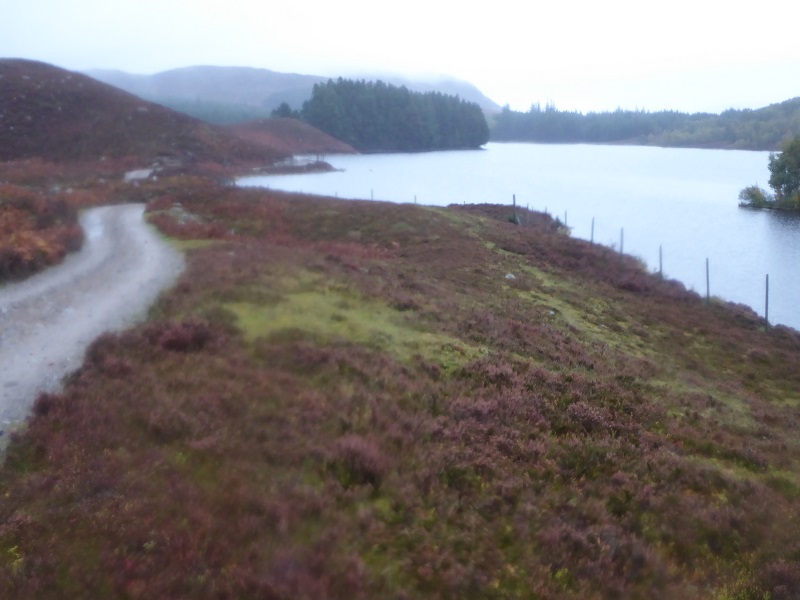
The Loch Gynack fence provides an example of a very specific type of access problem which though not common is not unique either. It concerns situations where people are prevented from enjoying a specific area of land where access rights are exercisable. Another good example is the fence on the north side of the river in Glen Lochay which appears designed to prevent people accessing the river. It was there prior to 2003 – indeed the late Donald Bennett raised it as an issue which needed to addressed in the negotiations which led to the Land Reform Act – and its still there!
Ostensibly, the Drumlean Judgement addressed a different situation where people were prevented from enjoying access rights over a much larger area of ground where access rights were exercisable by a fence/wall. It found that in such circumstances there needed to be sufficient crossing points. The Drumlean solution would not really work in relation to Loch Gynack because the fence is so close to the loch. However, the principle behind the judgement is that land managers have a duty to manage their land in a way that does NOT obstruct access rights:
The implication of this, I believe, is that if the problem cannot be solved by opening gates, then other solutions should be considered.
What needs to happen
The shore of Loch Gynack is clearly an area where access rights are exercisable and the fence effectively stops people exercising those rights. I believe therefore there is strong reason for the CNPA to take this further and am writing to them to suggest the Loch Gynack fencing, which was reported to their Local Access Forum in May (see here), is referred to them for further consideration and advice.
I am also trying to establish whether any of the new section of fencing received public funding. The underlying issue on the Pitmain Estate is its being subject to ever more intensive management and fences are being erected all over the place – completely the opposite to what is happening at Glen Feshie on the other side of the strath where fences are being progressively removed. The erection of deer fencing should be subject to some public control and were it to be so problems such as those at Loch Gynack could be completely avoided. Even if the fencing were required – and its difficult to see any purpose to this fencing apart from that of keeping from the loch shore – it could have been situated on the up-side of the track allowing people to wander along the loch shore and access the open hillside above through gates.

Yes, part of the reason for erecting this fence would appear to be to prevent the public from exercising their right to step off the track and walk down to the loch shore. It is therefore not compliant with the Land Reform (Scotland) Act 2003. Putting gates in it is not the answer. A large section of the fence, where it follows the northern shoreline of Loch Gynack, needs to be moved back at least 100 metres up the hillside so that the exercise of access rights is no longer impeded.
There would appear to have been no public consultation over the erection of this fence, despite its significance for public use of the path network around Kingussie. It is yet another example of the need for the Scottish Parliament to amend the current planning bill so that all deer fencing is brought under full planning control